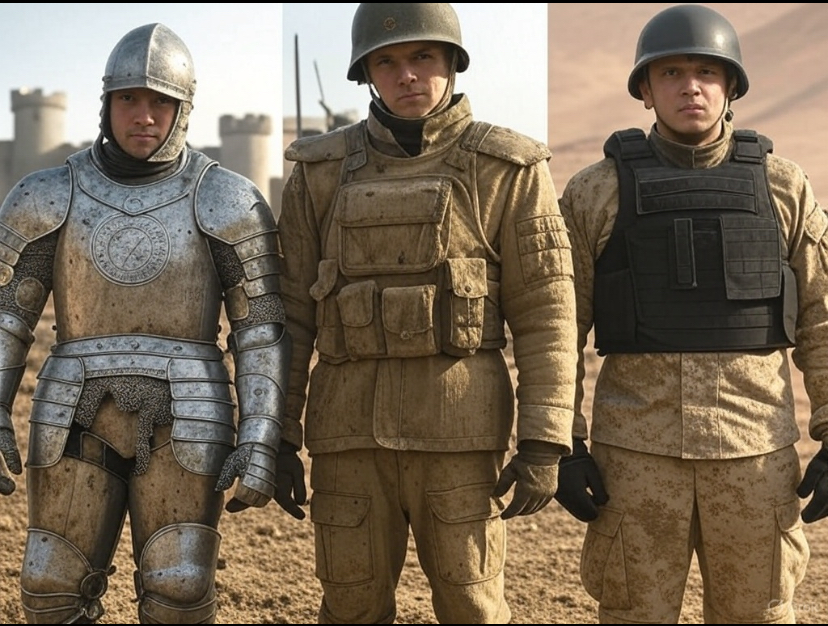Things to Remember When There is An Active Shooter
July 23, 2019
History of Body Armor
March 27, 2025Body armor has become an essential piece of protective gear for law enforcement, military personnel, and civilians alike. Whether used for defense in high-risk environments or for personal safety, body armor provides crucial protection against a variety of threats. There are several types of body armor, each designed to protect against specific dangers. Understanding these different types can help in making an informed decision on what best suits one’s needs.
1. Soft Armor
Soft body armor, commonly known as ballistic vests, is designed primarily for protection against handgun rounds and certain types of shrapnel. These vests are constructed from materials like Kevlar, Dyneema, or Spectra, which are woven together to create a flexible, lightweight, and durable garment. The protection provided by soft armor varies depending on its level. For example, a level II vest can protect against 9mm rounds, while a level IIIA vest offers greater protection from higher-caliber handguns. This type of armor is favored by law enforcement due to its balance of mobility and protection.
2. Hard Armor
Hard body armor is designed to provide protection against high-velocity rounds, such as those from rifles. Unlike soft armor, which uses flexible materials, hard armor utilizes rigid plates, typically made from ceramics, steel, or polyethylene. These plates are inserted into pockets in a vest or carrier to cover vital areas like the chest and back. The most common hard armor plate ratings are Level III and Level IV, which can withstand rifle rounds, including high-powered ammunition like the 7.62mm NATO or .308. Hard armor is heavier and bulkier than soft armor but is necessary for situations where threats include rifles or high-powered weapons.
3. Concealed Armor
Concealed body armor is designed to be worn under clothing, offering protection without being easily noticeable. These vests are usually made of soft armor materials and come in a variety of designs to accommodate everyday wear. Whether it’s a shirt-style vest or a sleek panel inserted into a jacket, concealed armor provides personal protection while maintaining discretion. Many individuals choose concealed armor for self-defense in potentially dangerous environments, such as urban areas or areas with heightened risk of violence.
4. Plate Carriers
A plate carrier is a type of body armor that carries hard armor plates. Unlike traditional vests that are built with soft armor or plates integrated into the system, a plate carrier allows the wearer to insert and replace plates as needed. These are typically used by military personnel and tactical teams because they offer more versatility. Plate carriers provide the option to use different plate types, depending on the threat level. They are designed to be worn with other gear, such as pouches for ammunition, first aid kits, or communication devices, making them a critical component of tactical outfits.
5. Spall Liners and Trauma Pads
Spall liners and trauma pads are accessories used with body armor, particularly hard armor plates. Spall liners are designed to catch fragments or “spall” that are created when a bullet strikes a hard plate. These small debris particles can still cause injury even though the main bullet may be stopped by the plate itself. Trauma pads, on the other hand, are added to reduce the blunt force trauma caused by the impact of a bullet striking the plate. While not a standalone form of armor, these additional elements enhance the effectiveness of existing armor by reducing secondary injuries.
6. Stab and Slash Protection Armor
In addition to ballistic protection, some body armor is specifically designed to protect against stabbing, slashing, or cutting threats. This type of armor is often used by correctional officers, security personnel, or individuals who face risks from knives, spikes, and other edged weapons. Stab-proof armor uses layers of materials like aramid fibers or other specially woven fabrics, which provide a barrier against the sharp edges of blades. These vests are typically lighter than ballistic armor, as they don’t need to protect against gunfire but are still highly effective against cutting threats.
7. Heavy Duty Armor
Heavy-duty body armor is specifically designed for extreme situations, such as combat zones or high-intensity tactical operations. This category includes armor that is reinforced to withstand not only gunfire but also explosions and fragmentation. Military-grade armor, including bomb suits and heavy plates, falls under this category. These types of armor are built to offer maximum protection but can be cumbersome and difficult to maneuver in. They are generally reserved for situations where the threat of attack is highly elevated, such as bomb disposal or high-risk military missions.
Conclusion
Choosing the right type of body armor is essential for ensuring safety and protection, whether you’re a law enforcement officer, a soldier, or simply an individual concerned with personal defense. With varying levels of protection, from soft armor to hard plates, as well as options for stab and slash resistance, understanding the differences in body armor can help you make an informed decision based on the type of threat you might face. Whether it’s everyday carry or deployment in combat zones, each type of body armor offers unique benefits tailored to specific needs and scenarios.


